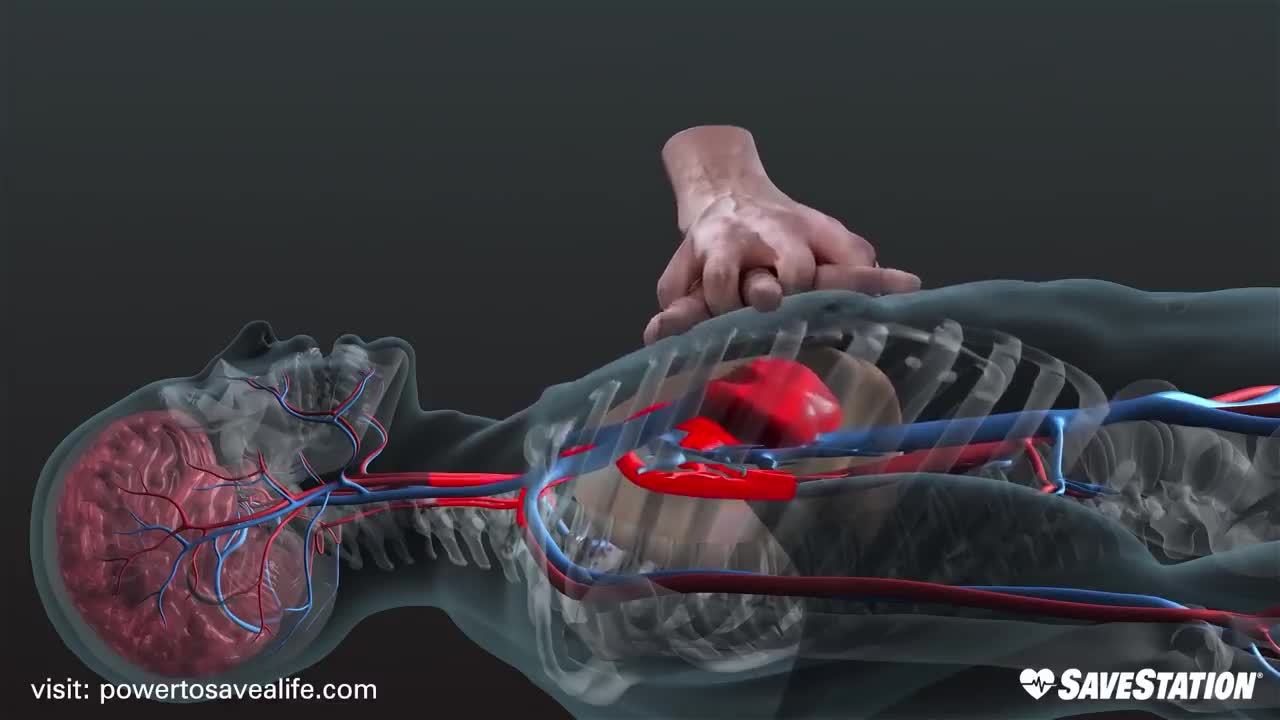Premium Only Content

THIS CAN SAVE YOUR LIFE || WATCH THIS FRIST THING IN THE MORNING
Cardiopulmonary resuscitation (CPR) is an emergency procedure consisting of chest compressions often combined with artificial ventilation in an effort to manually preserve intact brain function until further measures are taken to restore spontaneous blood circulation and breathing in a person who is in cardiac arrest. It is recommended in those who are unresponsive with no breathing or abnormal breathing, for example, agonal respirations.
CPR involves chest compressions for adults between 5 cm (2.0 in) and 6 cm (2.4 in) deep and at a rate of at least 100 to 120 per minute. The rescuer may also provide artificial ventilation by either exhaling air into the subject's mouth or nose (mouth-to-mouth resuscitation) or using a device that pushes air into the subject's lungs (mechanical ventilation). Current recommendations place emphasis on early and high-quality chest compressions over artificial ventilation; a simplified CPR method involving only chest compressions is recommended for untrained rescuers. In children, however, only doing compressions may result in worse outcomes because, in children, the problem normally arises from respiratory, rather than cardiac, problems. Chest compression to breathing ratios is set at 30 to 2 in adults.
CPR alone is unlikely to restart the heart. Its main purpose is to restore the partial flow of oxygenated blood to the brain and heart. The objective is to delay tissue death and to extend the brief window of opportunity for a successful resuscitation without permanent brain damage. Administration of an electric shock to the subject's heart, termed defibrillation, is usually needed in order to restore a viable, or "perfusing", heart rhythm. Defibrillation is effective only for certain heart rhythms, namely ventricular fibrillation or pulseless ventricular tachycardia, rather than asystole or pulseless electrical activity, which usually require the treatment of underlying conditions to restore cardiac function. Early shock, when appropriate, is recommended. CPR may succeed in inducing a heart rhythm that may be shockable. In general, CPR is continued until the person has a return of spontaneous circulation (ROSC) or is declared dead.
-
 0:51
0:51
Chrisfocused
4 years agoA must watch | 8 things that can your life forever
66 -
 LIVE
LIVE
Akademiks
4 hours agoYoung Thug Dissing YFN Lucci. Ready to Go back to Jail. Offset vs Cardi b
1,283 watching -
 7:07
7:07
Colion Noir
12 hours agoCalifornia Just Banned All Glocks
28.6K30 -

Adam Does Movies
5 hours agoTalking Movies + Ask Me Anything - LIVE
18.3K1 -

Jamie Kennedy
3 hours agoChoosing Good in a World Gone Dark | Ep 223 HTBITY with Jamie Kennedy
17.8K2 -
 LIVE
LIVE
SpartakusLIVE
7 hours ago#1 Challenge CHAMPION of WZ || Ridin' The GRAVY Train w/ GloryJean
424 watching -

The Pascal Show
2 hours ago $0.56 earnedDISTURBING UPDATES! New Developments In The D4vd Celeste Case... Possible Celeste Sighting?!
21.2K2 -
 2:03:18
2:03:18
The Charlie Kirk Show
5 hours agoTPUSA Presents This is The Turning Point Tour LIVE with Megyn Kelly and Governor Glenn Youngkin!!
220K63 -
 1:37:35
1:37:35
Badlands Media
21 hours agoAltered State S3 Ep. 47: Epstein, DOJ Whistleblowers, and Trump’s Tightrope
43.4K3 -
 LIVE
LIVE
putther
3 hours ago $0.81 earned⭐ Bounty Hunting on GTA⭐
61 watching